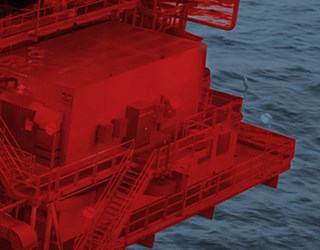NEWS THE SCIENCE OF MAKING A SPRING
The importance of heat treatment lies in its ability to improve the base materials’ mechanical properties to improve performance and enable the production of components with specific characteristics tailored to meet the requirements of diverse applications. By carefully changing the steel's microstructure, the Centek heat treatment process enables the production of spring steel with optimized toughness, ductility, strength, and resistance to fatigue, ensuring the finished centralizer will stand up to any downhole forces and deliver high restoring forces.

Centek heat treatment facility in the UK
This process involves controlling the transformation of the steel's grain structure through carefully controlled heating and cooling cycles. The key is to develop a Martensitic grain structure post heat treatment, which improves the strength and hardness of the steel.
The chemical composition and microstructure of the steel is critical to the heat treatment process. Centek's heat treatment processes are proprietary and aligned to our steel, which includes additional interstitial hardening elements to significantly improve our steel's hardenability, and wear resistance.
This is a highly specialized process, where it is crucial to maintain precise control over temperature, time, and cooling rates during each stage of the heat treatment process to achieve the desired mechanical properties in the finished product.

Martensitic grain structure in Centek steel post heat treatment
Centek's heat treatment process produces very consistent products with:
- Reliable spring properties
- Optimum hardness, strength, ductility & toughness
- Corrosion resistance
- Components that very consistently exceed design or industry standard requirements
THE CENTEK HEAT TREATMENT PROCESS

HARDENING
The first step of our heat treatment process is hardening; at this stage the steel is heated above its upper critical limit and held at that austenitising temperature for a specified duration. This is to ensure the iron crystal structure changes to Face Centre Cubic, this is where the carbon atoms migrate into the central position of the crystal structure, formerly occupied by the iron atoms.

Centralizers lined up to start the Centek heat treatment process
QUENCHING
Quenching happens immediately after hardening. The steel is rapidly cooled, by immersion in a quenching oil, again held at a controlled temperature. This rapid cooling traps the carbon atoms in their new location in the crystal structure, resulting in a very hard, brittle steel.

The quenching area of Centek heat treatment plant
CLEANING
Post quench, it is essential to clean the quench oil from the steel to remove any contaminants or residues that could affect the quality of the final product. This washing process involves the use of specialized cleaning agents to ensure cleanliness before tempering.
TEMPERING
Tempering involves reheating the hardened steel to a lower temperature to allow some of the martensite to transform into less brittle, more ductile structures like tempered martensite and retained austenite. The controlled formation of these microstructural constituents during tempering imparts toughness and ductility to the steel while maintaining sufficient hardness for the intended application.
In short, the purpose of tempering is to reduce the brittleness caused by the rapid cooling in the quenching stage, while maintaining or improving the steel's strength and toughness. Tempering also helps to achieve the desired spring properties, such as elasticity and resilience.

The Centek tempering furnace
HEAT TREATMENT QUALITY CONTROL

Daily batch control of heat treatment samples
Heat treatment quality control involves various measures and techniques to ensure that the heat treatment process consistently produces steel with the desired properties and meets specified requirements. Quality control is essential at every stage of our heat treatment process, from initial material inspection to final product testing. Here are some key aspects of our heat treatment quality control:
- 3rd party certified temperature-controlled system with thermocouples.
- Strict batch control is employed, and each product is hard stamped with a specific batch number traceable to the manufacturing date.
- Each batch is tested in onsite laboratory for hardness and development of Martensite.
- Outer, inner diameter and concentricity is checked pre and post heat treatment with go-no-go gauges.

Checks being undertaken before heat treatment
SUMMARY
Heat treatment plays a crucial role in tailoring the mechanical properties of Centek's steel to meet the needs of our customers. Through controlled hardening, quenching, and tempering processes, steel can be optimized to meet the specific performance requirements of the industry, striking a balance between hardness and ductility to ensure optimal performance and reliability.
GLOSSARY
-
Ductility: Ductility refers to the ability of a material to deform under tensile stress without fracturing. It is essential for applications where the material is subjected to bending, stretching, or forming operations. While increasing hardness often comes at the expense of ductility due to the formation of brittle phases like martensite, heat treatment allows for the adjustment of the steel's microstructure to achieve a balance between hardness and ductility.
-
Hardness: Hardness refers to the resistance of a material to deformation or indentation. It is primarily influenced by the steel's microstructure, particularly the presence of hard phases like martensite and carbides. Heat treatment can increase hardness by transforming the steel's microstructure into harder phases.
-
Martensite: Martensite is a microstructural phase that forms in steel during rapid cooling from a high temperature, typically during the quenching stage of heat treatment. It is a hard, brittle, and metastable phase characterized by its fine, needle-like structure.

